Where North-Siders Shopped:
'The Lincoln Belmont'
artwork - via Saul Smaizys
In the good old days customers came by bus, train, or trolley to shop in the stores like the 'Lincoln-Belmont-Ashland Business District' that was simply called by locals as "the Lincoln Belmont" so tells Leo Robert Klein, a contributor to LakeView Historical on Facebook. According to Jess Middleton, another LVH contributor, who was a newspaper boy for local neighborhood newspaper at the time 'The Lerner Booster' stated that this general intersection was a called 'The Avenue'. "You'd get dressed up to go shopping; it was a big thing," says Anne La Fleur, a longtime resident of Lake View. "You could buy fancy dresses and nice shoes; we'd go on weekends.
It was special!"
 “No one likes them anymore,” says Haderlein. “They’re
multistory; to get to the different departments you have to take an elevator or
escalator. People don’t like that. They don’t like to walk upstairs; they don’t
like to take elevators. They just want to be able to walk right in. These
stores are out of the past.”- Chicago Reader 1991
“No one likes them anymore,” says Haderlein. “They’re
multistory; to get to the different departments you have to take an elevator or
escalator. People don’t like that. They don’t like to walk upstairs; they don’t
like to take elevators. They just want to be able to walk right in. These
stores are out of the past.”- Chicago Reader 1991

photo above - AC Miller Photography
photo below - Ben Elsass Photography
The Chicagoan in 1929
Belmont-Lincoln-Ashland
The Old Commercial District
Aerial View of the Shopping District
image - unknown source
1937 photo - Vintage Tribune on Instagram
via Mariana Niscasco Historic Chicago-Facebook
Before internet shopping, before shopping malls, before the stores along the Mag Mile, there were neighborhood commercial districts. The most popular of its era around the turn of the 20th century was originally called the to be known later as the Belmont-Lincoln-Ashland Commercial District. Each commercial district had an 'anchor' store(s) that would draw other shoppers to lesser known or smaller businesses in that particular general area.
Wieboldt Department Store, Woolworths, and Goldblatt Brothers were those anchors from the turn of the 20th century until 1983 (for Woolworth/Woolco, 1986 (for Wieboldt) and 2000 (for Goldblatt). Historical Maps:
1887 Rascher Map
"X marks the center of the commerical universe"
1950 Sanborn Fire Insurance Map zoomed sectionals of the map above Belmont to Greenview
Belmont toward Roscoe
photo - Chicago Public Library via Explore Chicago

a page from The City on the Move
by Michael Williams, Richard Cahan, and Bruce Moffat

Lincoln and Belmont Avenues 1895
1910ish? photo - Chuckman Collection
with Walgreens signage on the edge of frame-left
images - Lake View by Matthew Nickerson photo below - Sulzer Regional Library
A Place to Shop in 1928
The Lake View Mercantile
on Lincoln near Belmont-Ashland
1058-62 Lincoln Avenue
(pre 1909 address)
postcards - Ebay

The Shopping District in 1929
the year of the Great Depression

An aerial view of shopping district 1930-ish
unknown source
The National Tea Company
Beginning with one store on North Avenue in 1899,
National Tea (view insert below) became the region's largest retail grocery chain. By 1920, when
there were about 160 stores in the chain, annual sales approached $13 million.
By the end of the 1920's, National Tea had over 600 locations in the Chicago
area and another 1,000 stores nationwide; sales had grown to about $90 million
a year. Many of these stores were closed or sold during the Great Depression,
but National Tea remained among the 10 largest grocery chains in the United
States for most of the twentieth century. During the 1950s, it acquired about
500 new stores by buying up smaller chains. In 1956, when annual sales topped
$600 million and the company had nearly 20,000 employees nationwide, National
Tea was purchased by George Weston Ltd., a Canadian company. There was little
growth during the 1960s, when the company operated about 240 stores in the
Chicago area (where it had fallen behind Jewel as the number one chain). During
the mid-1970s, when it still employed about 9,000 people around the region,
National Tea/George Weston suddenly abandoned the Chicago grocery market. By
the end of the century, there was little trace remaining of what had once stood
as one of the area's leading enterprises and the source of groceries for a
large fraction of Chicago's population.

image above - Lake View Saga

Shoppers 1935 - Calumet 412
Celebrating the Ashland Avenue bridge dedication of 1937 that link south Ashland south of the river with its northern route north of the river - Calumet 412
edited version that highlights the celebratory banners
by Lance Grey
postcard - CardCow.com
postcard - Bob Hendricks via Chicagopedia
with a tip from David Zoning
photo below - Glen Miller via Original Chicago-Facebook
1938 on Ashland Avenue view north
for men & women
new store at the corner in 1930
in the building by 1944
1946 ads
a payment booklet
part of my collection
Lincoln-Belmont-Ashland Business Association
sponsored by Lincoln-Belmont Days
photo - Daily News Archives
Traffic Conditions in 1933
Awarding Dividends in 1935
during the Depression
Record Profits in 1936
during the Depression
photo below - Lake View Saga
Traffic Issues in 1940
a video - Jeff Nichols via Forgotten Chicago-Facebook
View the 1948 shopping centers map (zoom) in Chicago via Encyclopedia.chicagohistory.org
A Renowned Shopping District
and that parking in 1952
for the zoomed view
map - Art Institute of Chicago
1954 photo - Ebay
Apparently the citizens were angry about an apparent loss of homes
1955 - Flickr
the second story view from the art deco building from the above photo - Flickr
Glazed terra cotta art deco ornamentation on the cornice of a building at the corner of Lincoln, Belmont, and Ashland from the photo above it. - Deco Architecture

postcard - Ebay
a new structure
by 1930

apparently the entrance was on Ashland Avenue?
corner of Ashland & Belmont Avenues
rendition photo - Ravenswood-Lake View Community Collection
1950's photo - Pinterest
ad image - Chicago Daily News via Chicago Public Library
an article in 1930
Their Buying Strategy
‘Klee Brothers & Co is one of the oldest and known firms operating large retail stores outside of Loop Their shoe departments carry a general line cater to the medium and better classes of trade. The store is a consistent example of what can be done women's shoes in an exclusive men's clothing store. Each of the three Klee Brothers stores cater to an entirely different nationality. The north side store is patronized by an almost exclusively German trade. The Milwaukee Avenue store is made up largely of Poles and the Ogden Avenue establishment does most of its business with the Irish. This condition implies the need of the most judicious buying…’
– Boot and Shore Recorder 1913
Advertisements
from Lake View High School
1972 yearbook
1601 W Belmont
Framed photo via John Barry
Local Urban Shopping Can Effect Neighborhoods Economic Status

1952 photo - Calumet 412
Survey 1948-1957
zoomed from above map


Mall Planned in 1959
Never Realized in 1960
via Dan Kufner - Vanished Chicago-Facebook
photo from Cindy Wood with her Grandma in 1960
on Belmont east of Ashland/Lincoln
1962 photo - Greg Reynolds, Forgotten Chicago-Facebook
1962 - Calumet 412
photo array Jerry Roberts, Forgotten Chicago on Facebook
1962 photo - Lance Grey LVH contributor

1962 photo Collezione Marone,Forgotten Chicago-Facebook

Chris Walker-Vintage Chicago Tribune 1986
via Xavier Quintana Historic Chicago-Facebook
image - Lake View by Matthew Nickerson
personal photo from Maurizio Cazares
his father, brother and himself 1976
via LakeView Historical-Facebook
photo - Nelson Herrera via Forgotten Chicago-Facebook Fast Forward to
2016
some of the presentation slides The Other Vintage Anchors
of the
Commercial District:
Wieboldt's - Goldblatt's
Woolworth's &
Lake View Trust and Savings
The Chicagoan
1950 Sanborn Fire Insurance Map
Lincoln School & Ashland
illustration - Department Store Museum from the Department Store Museum
"I remember the store at Lincoln-Belmont-Ashland. On the day after Thanksgiving we would stand on the corner of Lincoln-Marshfield and School Street to watch the Lake View Christmas Parade. We would marvel at the mechanical display window on that corner. Then, after the parade, it was downstairs to see Santa Claus in the toy department. If we were especially good we could get a Coke at the Snack Shop under the stairs! I miss those good old days!"
photo - Billion Graves
buried in Wunders Cemetery
1917 construction of the store - Calumet 412
1950 Sanborn Fire Map in sections
highlighting the School Street subway
to their other building
1922 - Daily News Archives
below a 1929 ad - Chicago Daily Tribune
1955 - Chuckman Collection
photo - Growing Up in Chicago-Facebook
postcard - Chuckman Collection

photo - Ebay image - Chicago's Extinct Business-Facebook

1980's? - Deco Architecture via Everyblock
Before and after view
of the annex building to the main store
photo contribution - Maleah Jo Bataoel
S&H Stamps Redemption Booklet
Closed to be Converted
The second story annex is razed
and the main building decades later converted 1992 photos - Suntimes via Chicago History Museum

The Beginning of the End
for the Store
in 1982
Creditors at the Door in 1986
The Mall Idea Returns in 1990 The Annex along Lincoln Avenue Razed
1995 photos - Robert Krueger, Chicago Public Library
via Explore Chicago Collection
The First Wieboldt's Store
on Belmont Avenue:
W.A. bought his Uncle's of the name W.R store
a tale of bankruptcy - fire - scandal
1907 photo - Daily News Archives
This store was located at 1056 W Belmont Avenue
(post 1909 address) at Seminary Avenue with a
pre-1909 address of 1302 Belmont Avenue
2018 Google Map view Owner William F. Wieboldt
(his nephew bought this store in 1905)
photo - Chicago History Museum
via Explore Chicago Collection
The Articles of Possible Scandal & Mystery image - Chicago Portraits
William A. Wieboldt had an uncle named W.R. Wieboldt who encouraged his nephew to travel to Chicago. WR had a store in Chicago - assuming on Belmont Avenue. I believe these articles and the photo above is about W.R. Wieboldt not his nephew indicated by Daily News/Chicago History Museum.
The Story Began by January 30th 1907
pre 1909 address 1302 = post 1909 address 1054 Belmont Avenue
then on January 31st
In Debt!! and Potential Suicide??
The Dream Continues in February 1st
Apparently in Hiding ...February 4th
Is Hiding Out in Kentucky
Still a Mystery by February 5th
Where is the Daughter ... Suicide??
The Extent of the Empire in Chicago
map - Trip to the Mall
extra large shopping bag and part of my collection
employee pin - part of my collection
Their Halsted Street Warehouse:
first it was owned by
a 1901 advertisement below
zoomed image above via Alex Bean
photo - Chicago Designslinger
1923 Sanborn Fire Insurance Map
The Mandel Brothers Warehouse building, now loft condos, were one of those warehouses built for the Mandel 'Loop' store in 1903 by
architects Holabird & Roche. By 1915
this building housed the firehouse company and equipment of Engine
#78 until the present structure on Waveland & Seminary Avenues was finally
completed by 1923. Wieboldt acquired the
Mandel Brothers Store along with its' several warehouses in 1970's when the
company bought the Mandel & Brothers and until Wieboldts' Stores demise in
1987. This former warehouse is still located at corner of Halsted & Aldine Streets. As of 1993, the Mandel brick & timber building is
listed in the U.S. National Registry of Historical Places.
Goldblatts on the right of the photo - retangular sign image
photo - Lisa Voigt via South Lake View Neighbors
The Belmont-Lincoln-Ashland shopping district of Lake
View had a new retailer on the block at 3137 North Lincoln Avenue by the early 1920’s by moving into the old Vitagraph Theater. Goldblatts Brothers and expanded during the late 1920’s to the old H.C. Struve Store located at
3155 N. Lincoln Avenue and redesigned the stores into one retail space. The old retail buildings on Lincoln Avenue from 3133-41 Lincoln Avenue once a collection of stores & were bought and redesigned in 1921-22 and 1925-28.
1923 Sanborn Fire Insurance Map
once was the location of Vitagraph Theater
(Read my blog post called Theaters Past
about the Vitagraph Theater)
Goldblatts buys along Lincoln Avenue in 1929
months before the stock market crash
The stores founders Maurice and Nathan Goldblatt opened a store at Chicago and Ashland Avenues in 1917, in a neighborhood that was then home to many Polish immigrants. Over the next 10 years, the firm's annual sales rose from about $15,000 to $1.4 million. As a retail company of medium-size department stores Goldblatt Brothers offered goods at low prices. By the mid-1960's, retailers such as Kmart, Woolco, Zayre, and Sears were digging into Goldblatt’s market share. Goldblatts expansion into the suburbs proved to be a difficult obstacle. Middle class shoppers looked for better and newer shopping options that forced the company to declare bankruptcy in 1981.
Their flagship store on State Street was sold to City of Chicago for a temporary public library location then later sold to DePaul University when the Harold Washington Library was finally built. Without the money from the City of Chicago Goldblatt's would have closed its doors. After it entered bankruptcy, the chain was purchased in 1985 by JG Industries Inc. and was profitable again. However, changing markets, increasing competition, and their vintage buildings the company continued to survive but under life support under new retail environment & attitude. By the year 2000 Goldblatt's closed for good and in 2003 liquidation.

photo via Chris Cullen, Pictures of Chicago-Facebook
the sign of store top middle view toward Belmont/Ashland
1950 Sanborn Fire Insurance Map
with a zoomed view below
Goldblatts constructs a fire house for Fire Truck 21 so to expand to Belmont Avenue east of Lincoln Avenue - Goldblatts's Food
the Lincoln Avenue store in the background
photo above - Art Institute of Chicago
via Explore Chicago Collection
the same building as of 2019 below

Fire Truck Company 21 move
via Sanborn Fire Insurance Maps
moved from 1529 Belmont Avenue to 1501 School Street
in 1941 so Goldblatt's could expand on Belmont Avenue.
the 1923 map
the 1950 map
zoomed view below
Before the building was converted to condos in 2021 it was used as storage facility for the 44th ward
below photo - Growing Up in Chicago-Facebook
view from Belmont/Ashland
40 Years in Business
Saving Stamps
images - Chuckman Collection
Howard Arbetman's mother (a contributor to Forgotten Chicago-Facebook) worked at Goldblatt's during WWII. She & her friend are on Lincoln Avenue toward the main intersection of Belmont, Ashland, Lincoln Avenues.
extra large shopping bag and part of my collection
Chicago Daily Tribune Advertisements
2019 photo by Bryan Krefft
via Forgotten Chicago-Facebook
photo - Jamie Groth Searie
via Forgotten Chicago Discussion Group-Facebook
employee pin - part of my collection
3262 N Lincoln Ave
1950's photo - Steve Lewandowski
via Original Chicago-Facebook 1950 Sanborn Fire Insurance Map
and below
(screenshot from the movie Baby's Day Out)
My source was a LVH contributor Maleah Jo Bataoel
who took this frame from that movie
some menu's
1995 photo - Robert Krueger, Chicago Public Library
via Explore Chicago Collections
1995 photo - Robert Krueger, Chicago Public Library
via Explore Chicago Collections
a with a 2021 Google view An Extra Large Shopping Bag
part of my collection
When the Big 3 Closed
Along Lincoln Avenue
The once dominate commercial area of Lake View by 1995 was still in a state of shock with Woolworth in Chicago closed in 1993 and then all its' stores nationally by 1997. Goldblatt’s had a second lease on life in 1982 but finally closed by 2003. The bedrock of the Lincoln/Ashland/Belmont area was Weiboldt's and this Chicago based outlet closed 1986. The Weiboldt's annex was torn down in 1995. All these closures had a rippling effect on Lincoln Avenue after these anchor stores left the landscape.
The Stores Lost
& to be Forgotten:
Kotz Shoe Store
corner of School, Marshfield, & Lincoln
photo - 'black and white are the colors'
'My thanks to 'LakeView Historical-Facebook' contributor Carter O'Brian for discovering the Kotz photos.
1995 photos - Robert Krueger, Chicago Public Library
via Explore Chicago Collection
When the anchor stores left the scene
this was a ripple affect to this area
3210 N Lincoln Avenue just north of Belmont Avenue
3212 N Lincoln Avenue
3218 N Lincoln Avenue
3220 N Lincoln Avenue
3226 N Lincoln Avenue
3236 N Lincoln Avenue
3242 N Lincoln Avenue
3248 N Lincoln Avenue
3260 N Lincoln Avenue and part of Woolworth's
3330 N Lincoln Avenue - northwest at School
3312 N Lincoln Avenue
3330 N Lincoln Avenue - northwest at School
3230 North Lincoln
with the remnants of both the Citizens State Bank of
Chicago and Math Iglers down the block on Melrose.
3344 N Lincoln Avenue
Dinkel's3329 N Lincoln Avenue
3459 N Lincoln Avenue near Cornelia
1992 color photos - Suntimes vai Chicago History Museum A Before and After View of a Corner
photo - Maleah Jo Bataoel
by Mark Susina/Flickr
Reinvestment Project
for 2022/2023
photo & text - Chicago Department of Tranportation
reported by ..
Ideal - Dry Goods Store
once located in the District of Lake View
When the majority of businesses in our area were
German-American owned & managed
from my personal collection
dry goods store called IDEAL owned by a Miss A.A. Wieboldt
at the post 1909 address of 1608 W Fullerton Avenue
... now the English version


Ideal Candies
their catalog
selected pages & part of my collection
4313 N Ravenswood Avenue
Lake View's
Vintage Banks:
Lake View Trust & Savings
A savings and loan banks and their association (or
S&L), also known as a thrift, is a financial institution that specializes
in accepting savings deposits and making mortgage and other loans. The savings
and loan association became a strong force in the early 20th century through
assisting people with home ownership, through mortgage lending, and further
assisting their members with basic saving and investing outlets, typically
through passbook savings accounts and term certificates of deposit. Lake View Savings and Loan was located 3211 N Ashland Avenue. In 1921 the bank had a
balance sheet worth $85,000. Below are a set of photos that highlight the bank's past and the street corners future.
"My Old Home"
the front cover of booklet that advertised the
planned development of the new building
My guess that these buildings were first??
and this was the second building below apparently
the third building, no doubt
with back cover below

the back cover of the booklet
all images are from my personal collections

Postcard 1914 - Illinois Digital Archives
Date unknown - Chuckman Collection
postcard image - Ebay receipt - Ebay
Raising the Flag in 1972
a newspaper ad in 1974
The bank financed the first book ablut the history of Lake View
1959 photo - Sulzer Regional Library
photo - Lance Grey, LakeView Historical contributor
1985 photo - Sulzer Regional Library
2009 Google Maps view
in the window is a poster of the first failed development
2013 Google Maps view
2014 Google Maps view below showing the Medic Building
the demolition below
2014 photo - Robert Zamora
This bank location was removed from the landscape by 2014
for a planned development for 2017 - Whole Foods after years of failed developments such as the mixed-use building called 'Lake View Collection' and then Target. All of these planned developments had a lot of opposition from neighborhood associations due to its scope, design, and particularly traffic concerns.
photos - DNAinfo
This store opened in 2017
& The Montfield Hotel
2016 photo - Eric Alllx Rogers via Flickr
Newly Named Bank & Building Planned in 1927
main entrance on Belmont
photo - Serge Lubomudrov via Flickr
the metal workings at entrance
photo - David Pirmann via Forgotten Chicago-Facebook
an ornamental photo - Yo Chicago
one year
before the market crashed...
November 1928 Chicago Daily Tribune
photo & article
a bank brochure in 1929
images - Ravenswood-Lake View Community Collection
Overall Design of the Bank
Stylistically, this building combines Classical influences typically found in both downtown and neighborhood banking institutions, with elements of the Art Deco style popular in the late twenties. The Bank's monumental arched entry located on Belmont is its most conspicuous Classical feature. Reminiscent of the Renaissance work of Alberti (especially the Church of St. Andrea at Mantua). The three-story arch springs from strong Ionic columns. Once inside this impressive archway, the scale changes to one more human. A recessed post and lintel doorway painted blue green is embellished with more intricate Classical details deluding rosettes, lintils, quivers and acanthus patterns. Hanging from the center of the shallow vaulted entrance is a wrought iron bronze lantern Hanging from the center of the shallow vaulted entrance is a wrought iron bronze lantern.

the interior photo - Vstyle - unknown date
a 1929 brochure of the bank
images - part of my collection
The Interior Design
'Once inside the main doorway there is a double foyer. The first, a small shallow vestibule has a coffered ceiling, travertine (type of limestone) and veined marble flooring set in a diamond pattern. The vestibule opens into a broad lobby with a coffered tile ceiling and pink marble wainscoting The next space is the bank's grand two-story banking room. Because of the square skylight with a geometric spoke pattern and the delicately scaled ornament, the space is monumental but lighter and more intimate in feeling than the exterior might suggest. The skylight is surrounded by square coffers and squares of plaster work. Its surrounding walls are articulated by different sized bands of plaster ornament using both the vocabulary of Classicism and Art Deco. The broadest band contains a finely-scaled Art Deco frieze punctuated by large liberty coins in the center of each wall. Opposite the doorway at the second-story level are three hinged doors that opened on the banks second-floor accounting room. The office spaces can be accessed from the bank vestibule, but the main office and hotel entrance is on Sheffield. The elevator lobby has marble flooring in the same pattern as the banking room.'
Proxy & Notice for Shareholders in 1932
image - part of my collection
Banks fails due to the Depression of 1929
plaque on the building by Taric Alani
This grand building housed both a bank and The Montfield Hotel. The bank survived only short period of time between 1928-32 and other half of the building became a SRO hotel into the early 1970’s. The bank was closed around 1932 in the devastating fallout from the Depression, and it lay dormant for a decade until the Rationing Board (WWII) took over the building in 1942, serving food, coffee, tires and sugar to 2,000 people a day.
The Main Entrance 1977
photo - Jeff Grunewald via
Forgotten Chicago on Facebook
Construction began in November 1928 and was completed the following spring. The bank originally occupied the central part of the first two stories, while the remaining area of the second floor and the entire third floor was used for rental offices. The ground floor was also occupied by retail uses, and the upper three floors were used for hotel rooms. The building had periodic years of vacancy until a developer converted the space in the old hotel into 54 lofts in 2005.
In 2008 it was listed in the National Registry of Historical Places.
The Montfield Hotel
*the only reference I found online*
This article mentions 200 residents of a six story 120 unit hotel
the former hotel to apartments in 1984
The Citizens State Bank
of Lake View
3228 N Lincoln Avenue
established by 1913
apparently the original building
photo - Illinois Digital Archives When Lake View Trust employees resigned
to work at the Citizens State Bank down the block in 1913

located at the right of this zoomed photo above
from Lance Grey-LakeView Historical
image - Chicago's Classical Architecture:
The Legacy of the White City
apparently the second building
1989 photo - R. Krueger, Chicago Public Library
via Explore Chicago Collection
'Until the 1950's, it was a bank. Then it was a shoe store,
then a dance studio, and then a pawn shop. Now, this early-20th-century terracotta building at 1623 W Melrose was then reborn as a loft
condos development.' – Yo Chicago
image - Yo Chicago
photos - Yo Chicago
with a 2007 Google View
2008 photo - Chicago Magazine-Dish
The 2008 condo conversion of the century-old Citizen’s
State Bank at Ashland and Melrose Avenues produced nine above-average loft
spaces, some neatly burrowed into the neoclassical façade and others breaking
free in sharp geometries. “One of the themes of the construction was a marriage
of classical and contemporary architecture, where the old was salvageable,”
says developer Robin Solomon of Gary Solomon & Company. The eastern Lincoln
Avenue façade was pretty much ruined, so Solomon and sister Jill, also serving
as listing agent for the building, took the opportunity to send window bays
jutting out from the building envelope.
Broadway Savings
and Trust
2805 N Clark Street
1914-1934

a key tag from Ebay

photo - Kenneth Joesphson via Forgotten Chicago-Facebook
Closed its Doors in 1934
probably due to the Depression of 1929

and then it became the First State & Savings Bank

and then ...
The Central Savings & Loan
image - 'Lake View' by Matt Nickerson
Svea Building & Loan Association on Belmont
image - 'Lake View' by Matt Nickerson to become
Central Saving and
Loan Association

image - 'Lake View' by Matt Nickerson
matchbook below - Ebay
also a branch on
Belmont, Lincoln, Ashland intersection
1995 photo (left side) - Chicago Public Library
via Explore Chicago Collection
and below 2008 photo - Flickr via Mark2400
Citizens Bank/Loans?
or was this the same as Citizens Savings & Loan?

1955 photo - Chicago History Today
with a 2013 photo below - Imperial Realty Company
The Lake View State Bank
3179 N Clark Street
 an advertisement from the Lake View High School yearbook
an advertisement from the Lake View High School yearbookthe interior below ...
postcard - Chuckman Collection
text - The Economist: a weekly financial - 1919
a 1928 stock certificate from Ebay
a pamphlet below
images - Ebay
and like most banks during the
Great Depression of 1929
and then in 1946 ...
The Belmont National Bank of Chicago

1950 photo - Ebay guard security patch - Ebay
Planned New Development
in 2021
Hubbard Street Group is planning to redevelop the property located at the corner of Clark, Belmont and Halsted (3179 North Clark Street) into a two-story commercial development with underground parking. The property is currently improved with a two-story building occupied by Fifth Third Bank and a surface parking lot. - per 44th Chicago ward office
the space as of 2022
and its other location?
3154 N Clark Street
photo above - Cragin Spring via Flickr
below photo - Mark Susina via Flickr
The bank changed hands to
Exchange National Bank
and then again to ....
Diversey Trust
& Savings Bank
1168 W Diversey Parkway
1924-1937/44another victim to the Great Depression of 1929
from 1944 Moody's ...
Peterson Furniture Company
on Belmont Avenue
in 1910
1920-1960
next to Weeghman Park
aka
Wrigley Field
 photo - Industrial History
photo - Industrial History text - Black Diamond/Google Books
photo - Hank's Truck Forum
The Coal Yard in Maps
1894
the first apparent owner was Peter Connors Coal zoomed below
1950
zoomed below
photo above - Trolleydodger
Waiting in Line
photo below - via Susan Groff contributor of
LakeView Historical-Facebook
Henry's Hamburgers and Frankville included in this photo
Hildebrandt Coal Company of Chicago1157 W Newport AvenueThe owner, Robert J. Hildebrandt, lived and worked in Lake View
per this 1911 Illinois list of Corporations1923 Sanborn Fire Insurance location west of the then existing tracks and just north of the Ravenswood elevated
2019 Google view of the location
The Lake View Exchange
of the
Illinois Bell Company
(forunner of AT&T)
advertisement aboverr &below - 1964 Lake View
anniversary magazine
Vintage Biz's
according to the book called the Lake View Saga
post 1909 address - 3409 N Ashland Avenue
Grocey Stores
Residences
I have been told that grocey stores and the owners of said grocey stores would be one building. These grocey stores would be located mid-block. One such possible grocey store location is
1247 W Wellington Avenue. These pre-supermarket day establishments would serve their customers in these localized areas. Once I locate more I will post them in this segment. 2023 Google view
1923 Sanborn Fire Insurance Map
1950 Sanborn Fire Insurance Map
Wieland Dairy Company
andWieland Ice Cream Company, Inc. 3638-44 Evanston Avenue (Broadway)and directly across the alley the they occupied the buildings at 3623-25 N Halsted Street photo - unknown location and date is pre 1916 Evanston Avenue was renamed Broadway in 1916‘The Wieland Dairy and Ice Cream Factory, (in Chicago), was developed by Jacob and Gottlieben (Gleich) Wieland. They came to the America in 1889, bringing along their 7 sons,1 daughter. The Wieland Dairy was very successful, as was the Ice Cream Factory, where the "Good Humor" ice cream bar was [apparently] developed. In the early 1935 the dairy was sold, for $8.5 million to "Borden", hence the name "Wieland/Borden Dairy" on all the bottles for a period of time (stipulated in the sale), later becoming just "Borden". The money was divided equally between the the sons and daughter. Two of the sons were against the sale, so they started C.J. Wieland & Company Dairy' [but apparently at another location]'.
– Answers.comBorden acquired the company as a subsidiary in 1922 along with other small & independent dairies in the 20's & 30's. This 2015 Google Map shows the original building (main office) to the right and the second building to the left all the buildings in text type in red a 2018 Google Earth view
Sanborn Fire Insurance Map Views
1923 neighborhood view
1923 view along Broadway and Halsted Street
1950 view along Broadway
now called Borden & Company with a expansion in 1927
3626-44 Broadway
and then Halsted Street
3626-44 Halsted
a 1907 advertisement
(Evanston Avenue became Broadway in 1913)
a 1911 ad - Chicago Daily Tribune
promoting milk & ice cream
a 1913 advertisement a 1914 advertisementThe First to Advertise on Film in 1922postcard - Hip Card
Used the Most Modern
Transportation And According to Milk Plant Monthly
And According to Milk Plant Monthly A 1928 view along Broadway
A 1928 view along Broadway 

 this 1/2 pint is part of my personal collectionwith reverse view below
this 1/2 pint is part of my personal collectionwith reverse view belowThe Company Expands in 1928
to N Tripp Avenue in Belmont Gardens



Owner Buys a Home in 1928
third largest distributor in Chicago in 1933
Company absorbed by Borden in 1936
an independent subsidiary since 1928
of this Building


The Second Occupant
of the Building
Curtiss Candies
This company had several locations in Lake View
store display - part of my collection The Third Occupant
of the Building


The Fourth Occupant
of the Building
Walmart Express in 2011
Planet Fitness
photos - Yelps!Weiland Dairy
Successor:
Bowman Dairy Company
one of several retail locations
1602-14 Berteau Avenue
1904 advertisements - Chicago Blue Book & selected names 1081 Ravenswood Park = 4243 Ravenswood Aveune
pre 1909 address vs post 1909 address
Nieman's Dairy
1754-58 Barry Avenue
bottle top - Ebay
 photos - 1964 Lake View anniversary magazine
photos - 1964 Lake View anniversary magazineMeyer's Drug Store
Nelson Roofing Company
1019 Lincoln Avenue
was the pre1909 address
The equivalent is 3118 N Lincoln Avenue

image - 'Lake View' by Matt Nickerson
photo above - 'Lake View' by Matt Nickerson
Meyer's Bakery
3219 N Ashland Avenue
A.H. Gentzel's Art Studio
3052 N Lincoln Avenue
pre 1909 address of 669 N Lincoln Avenue
once located in the Township/City of Lake View
postcards are part of my collection
listed as Lake View, IllinoisWashington Shoe Repair
now part of space for the Berlin Night Club
photo - Dean Pappas vis Forgotten Chicago-Facebook

Petter Merz & Sons
2900 N Lincoln Avenue
photo - Ebay
.jpg)
.jpg)
.jpg)
The Luggage Shop
919 Belmont Avenue
(My Facebook Album)
2846-56 N Broadway
and 3408 N Southport Avenue
Edward Bavard Heathand his creation
location either on Broadway or SouthportEdward Bavard Heath
"A wiry little man of five feet, 110 pounds, Ed Heath abounded in enthusiasm. He had a natural knack with mechanics, was expert at carving propellers, and did everything he could to please his customers."
1923 Sanborn Fire Insurance Map His Products
3823-29 N Broadway This company's main store and factory was located
at 3823 Broadwaya 1923 Sanborn Fire Map view

images sourced from the link above
This is the image of the founder Elie Sheetz who established his company in 1897 on the east coast. His national company had several storefronts in the Loop area of Chicago, as well in Lake View (main office & factory) and Uptown.one of the first advertisements
The second section of the ad below
The main store from the advertisement above
below an advertisement from 1921
1935 image - Linns.com
with a 1937 ad also from Chicago Daily News
below image - BJ Wolff via Pinterest also known for it's in-store homemade
dark chocolate turtles called 'Charms'


A stand-along article 1983
page 2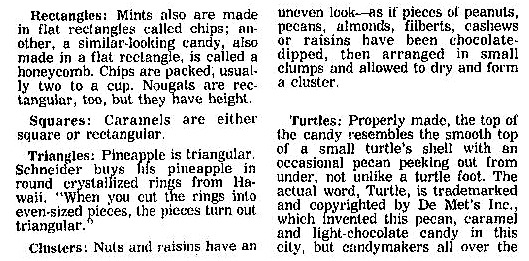

2016 Testimonial by
Barbara Jean Rogers
"I grew up with Jackie Schneider, Sid's daughter, and Elly Tichler, whose father, Hans Tichler, who was a master candy maker at Martha's, as well. In the autumn, Mr. Schneider would make caramel apples with Michigan wines. The sweet taste and creamy texture of the caramel complemented the tartness of the apples. Even at age ten, I knew those were an extraordinary version of a common treat. My favorite was the sponge candy, but the napoleons (peppermint, lemon, cherry, wintergreen, spearmint, and lime 1" round fondant "sandwiches" with dark chocolate in the middle) were a very close second. I would always buy a pound of sponge and a pound of napoleons on my way into the city for a visit and another pound of each on my way back to Nashville. And I have never tasted anything so weirdly delicious as the chocolate-covered rose gels. When I was little, "Aunt" Sally would give me a napoleon, and I would sit on the turquoise naugahyde hassock just inside the front door of the shop, eating the candy in little bites while Mother caught up on the neighborhood gossip. I will miss Martha's until the day I die. Best candy I ever tasted; better than Godiva & Ghirardelli, better than any other candy anywhere."
4313 N Ravenswood
*My Facebook Album*
Victorian Restaurant
and Ice Cream Shoppe
953-55 W Belmont Avenue
photos - Ebay

.jpg)
Belmont/Paulina
photos - Ebay
The Wellington Hat Shop
3004 Evanston Avenue (Broadway)
a pre1914 address
M. Adlerblum Furrier
"This is a picture of my grandparents in front of
their store which became a 31 flavors in 60s across from what became Jane Addams Hull House
on Broadway north of Belmont. Picture was before 1915." Rich Rubin was interested in the reflections from the
windows so added some other photos of possible interest This shop was probably located at somewhere between 3207-3213 Broadway (Evanston Avenue)
This shop was probably located at somewhere between 3207-3213 Broadway (Evanston Avenue) Lake View Upholstering & Cabinet Works

Barry Tavern
&
Show Club
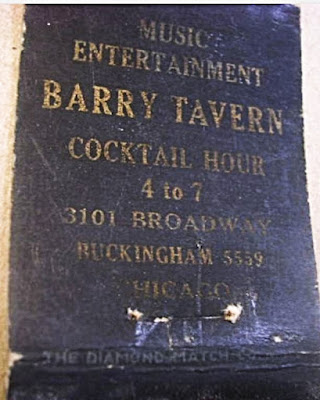

one of
their business that was located
at 3008 N Lincoln - notice the 2 phone numbers
photo - Some Unimportant Chicago History/Facebook
2839 N Lincoln Avenue
 on deliveries
all 3 photos - Joanne Melville
via Forgotten Chicago-Facebook
1923 Sanborn Fire Insurance view
2018 Google view of the location
on deliveries
all 3 photos - Joanne Melville
via Forgotten Chicago-Facebook
1923 Sanborn Fire Insurance view
2018 Google view of the location
Herman Yates's Drug Store
located in the District of Lake View
photo - Ravenswood-Lake View Community Collection
Aug.[ustus] Hellwig
3126-28 Perry (Greenview)
listed in the 1950 Sanborn Fire Insurance Map as a private garageThe building stands as of 2019Clody's Flower
Shop
3924 N Clark Street
ad - 1918 Jewish Community Blue Book
Wittbold
Florist
The long history in Lake View
The company began in the park, Lincoln Park at North Avenue and Clark Street in 1857. I am assuming that the company moved shortly after the Great Chicago Fire of 1871 to Lake View Township.
1909 ad - Chicago Blue Book & selected names pre 1909 address
Wittbold American Florest Ad August 15, 1889 drloihjournal.blogspot.com
1901 ad - Chicago Blue Book & selected names
1905 ad - Chicago Blue Book & selected names
Maps: 1887 Rascher's Atlas
X marks the spot
1891 Sanborn Fire Insurance Map
1894 Sanborn Fire Insurance Map
zoomed below
The Wittbold's Family Addressnext to their green houses
1909 old address
1909 Blue Book & selected names
view above map
1910 old address
1910 Blue Book & selected names
view above map
Their Modern Retail Story
in 1975
1950 edit Sanborn Fire Insurance Map
X marks the spot of the 1975 retail space
Lake View Laundry
3018 N Clark Street
est 1909
postcard - Ebaytext - 1922 Blue Book of Chicago
1923 Sanborn Fire Insurance Map
3815 N Southport Avenue
The Tailor and Cleaning Store
1252 W Addison Street
image - Ebay
Southport Cleaners and Dyers
3344 N Southport Avenue
image - Ebay
Just by learning about the history of telephone exchanges one can estimate the year range of a business.
image below - Living History of Chicago and Illinois
E.L. Moore
manufacturer (storefront) of Havana Cigars
913 W Belmont Avenue
image - Warner Printing Company
The Warner Printing Company
3351-55 N Sheffield Avenue image - Warner Printing Company
Diversey Wine image - Warner Printing Company
Stations, Garages & Dealerships:
Isaacson Garage
1930 image - Warner Printing Company
 H & G Moter Sales
3406-08 Lincoln Avenue
dealer for the Studebaker automobile
images - Warner Printing Company
H & G Moter Sales
3406-08 Lincoln Avenue
dealer for the Studebaker automobile
images - Warner Printing Company
 Motor Sales Company
3637-39 N Southport Avenue
Motor Sales Company
3637-39 N Southport Avenue
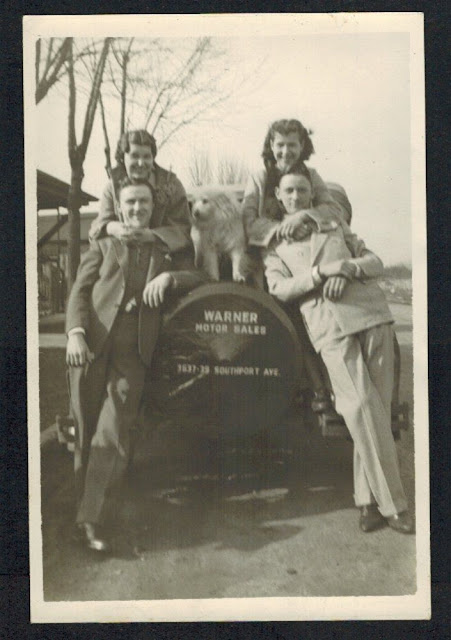
photo - Ebay
The Picture Studios
on Belmont Avenue
& Clark Street
Belmont Studio
960 W Belmont
images - Ebay

 Radium Studio
847 W Belmont Avenue
Radium Studio
847 W Belmont Avenueabove image - my collection
below image - Ebay
Lodeman Studio
738 W Belmont Avenue
images - Ebay

 Alfo Studios
822 W Belmont Avenue
images - Ebay
Alfo Studios
822 W Belmont Avenue
images - Ebay

Hansen Photograhy
3221 N Clark Street

 Alexandre Kid Gloves
Clark/Halsted
Alexandre Kid Gloves
Clark/Halsted probably when Lake View was a city
trading cards - Ebay
Cody's Flower Shop
3924 N Clark Street
Belmont Quality Foods 1120 W Belmont Avenue
Food Stamps Credits
The initial Food Stamp program in the United States began in the 1930’s and served two purposes - (1) relief for the poor, and (2) providing price supports for agricultural products by keeping surplus foods off the market.
The Shopping Areas of 1948
A. Johnson & Son
3827-9 N Ashland Avenue
zoomed view of the address
Another list
of grocery stores in 1948
F & N Grocery
on Greenview & Wolfram
photo from Nick Nikola Sr. - his family's biz
Nick Nikola Sr. and Joe Nickola tells LakeView Historical-Facebook
that “Our mom inherited the store from her mom in the 1960's. The building was sold in 1985, Jewel
and Dominic's grew too big for the store to stay in business. Before the store, the building was used as a tavern. There was an extension under the sidewalk in
front of the store for what use to be a small freight elevator. There was a
electric conduit for the city lights going right thru it"
also, on that corner
1968 photos from Nick Nikola Sr.
via LakeView Historical-Facebook
Still flying
a 2019 Google View of the flagpole on the corner below
Ann Moeller a contributor to LakeView Historical-Facebook chimed in
to the same thread of comments by saying, “Your father was the official flag
person. When he opened the store at 7:00 AM he would walk across the street to
raise the flag. When he closed at 6:00PM the flag was taken down. A small
gesture that was appreciated by the entire neighborhood.”
A 1949 List
of Grocery Stores
Dalkullan's Gift Shop
3252 N Clark Street
Chicago History in Postcards
Chicken Box
postcard - Ebay
Shops on Diversey Parkway
in 1951
1951 stores between Sheridan Road & Clark

Random Shops
by Greg Hundrieser
Speedliner Company
2 locations shown
postcard - Card Cow1956 advertisement - The Rotarian Ideal Candies
3311 N Clark Street
A Soda Fountain & Candy Store
1978 photo - Somer Images with Pete Vasilikos
From a message board called Straight Dope:
"We used to go there frequently when my sisters and I were kids, not only for the awesome ice cream and sodas, but also the ambiance; when you walked in, it was like going back in time to the '40's or '50's." – wolfgirl40
"It was Ideal Candies. Pete Vasilikos the owner, son of the original owner, Nick Vasilikos, closed this wonder ice cream parlor and candy store in 1987 after almost 50 years of operation, following his triple by-pass surgery. R.I.P" - Gordonio via Chowhound
"After closing the family sold the building to chef Scott Harris who opened Mia Francesca, an Italian restaurant in the space."
- Kolak of Twilo
The Toy Store
on Halsted Street
3056 N Halsted Street
My thanks to Leo Robert Klein via LakeView Historical-Facebook for recalling this store in old Lake View
Swedish
Shopping
Shopping at
Diversey Parkway
1951
Nelson's Brothers
3045 N Lincoln Avenue
zoomed below
a 1959 ad - Chicago TribShopping
on Broadway
in 1969
There was a series of articles called 'Walking Tour' by Chicago journalist Susan Nelson. Ms. Nelson highlighted shops and stores in various neighborhoods in the city
Facebook site called LakeView Historical
Shopping
on Clark Street in 1969
Shopping
on Lincoln Avenue
in 1969
The Bread Shop
3400 N Halsted
northwest corner of Halsted & Roscoe
photos - Sulzer Regional Library
In 1971—the year the Union Stockyards closed, she points
out—she opened up a bakery, the Bread Shop, in Lakeview, near the corner of Halsted and Roscoe.
She used only organic whole-grain flour, which she purchased from a health food
store on the far south side. At the time she believed—mistakenly, it turns
out—it was the first vegetarian establishment in the history of Chicago. And
for several years, it remained one of the few. But in the
late 1970s, the animal rights movement began to grow, and in 1987, John
Robbins’s book Diet for a New America brought together the strands of human health, animal suffering, and environmental impact into a
powerful argument for vegetarianism not just as a personal choice but as a
social movement. “It pepped everything right up again,” says Stepkin. “Up until
a few years ago, [the vegetarian] movement seemed steady. And now I feel we’re
in the middle of an enormous explosion. There was one business
in ’71, and now there are over 50 today.” In 1996 the Bread Shop closed. - Reader 2018

Chicago Tattooing
once located by the old Alley complex of stores
both images - East Lake View by Matt Nickerson
Chicago Tattooing Company
900 W Belmont Avenue

- on Grace Street west of Broadway opposite Marigold Arena
images - Ebay
image - Dr. Jakes Bowling History
image - Chicago Daily Tribune Ad 1988
photos below - via Dr. Jakes Bowling History
A Member of an Association
ad - Chicago Tribune

1986 photo - Chicago History Museum Southport Avenue
An Auto Gas & Wash
3736 N Halsted Street
David Akiyama from LakeView Historical-Facebook contributed this newspaper photo of the corner of Bradley Place and Halsted Street mid-1960's. This space was once part of patio area of Bismarck Gardens during the turn of the 20th century
both ads from the Chicago Tribune
The Drum Gift Shop
3215 N Broadway
Ghost sign, the last remains of the gift shop that is
located in the Walgreens loading zone
2013 photo - Garry Albrecht
text from a 1969 article
about Broadway shops

Selling masks in 1988
ghost sign fading away
per 2018 Google map
Commercial Spots in 1988











*Need Photos on These Shops*
Scenes
3168 N. Clark Street
Located on Clark just off Belmont, Scenes set up shop in 1987. At the time, about the only coffeehouses in the city were the venerable Cafe Pergolesi and No Exit, both of which had their roots in the 1960's. 'The cafe, which has only 10 tables, sells books and scripts, postcards by local artists and all sorts of theater magazines. On Thursdays, the bookcases are usually sandbagged by piles of what seem like every free weekly published in Chicago-not just North Side stalwarts such as the Reader and Windy City Times, but also New City, The Grey City Journal, PerformInk, Outlines, Gay Chicago, Babble, calendars from the Film Center, Facets, fliers for performances all over town.'Cafe Pavo
(photo search)
3523 N. Clark Street
Pleasant Wrigleyville coffeehouse popular with students, artists, musicians and Ethiopians (there are several Ethiopian restaurants along this stretch of Clark Street). - Chicago Tribune
Cafe Pergolesi
(photo search)
3404 N. Halsted Street
If you`re looking for an authentic bohemian atmosphere, this is it. The folks at Caffe Pergolesi were pouring cappuccino long before it became fashionable. Read the article below:
Chicago Tribune August 23, 1991
By Jodi Wilgoren
'Though not technically Chicago`s oldest coffeehouse, it is the one that has been under the same ownership and in the same spot for the longest time-22 years. Founded by David Weinberger, now 56, because he could not find a decent place to hang out in the Windy City, Pergolesi is a mellow, simple coffeehouse tradition. It is only open in the evenings and is closed two weeks in April for Passover. The dark room features tables tucked away in crevices, including two choice spots on a raised platform by the Halsted Street windows, and is usually adorned with local artistry. Coffeehouse collectibles line a shelf overhanging the kitchen counter, and Weinberger`s first espresso machine, a 1950s Victoria, looms over the cafe to lend an antique flavor. Decor, clientele and menu at Pergolesi are eclectic, a fuzzy reflection of the proprietor. ``It`s whatever I like,`` explains Weinberger, a 56-year-old Orthodox Jew who grew up in New York City coffeehouses and favors good espresso, good food and good conversation.'

love the caption!
1944 postcard - Ebay
Save Rite Pharmacy
on Broadway
3479 N Broadway
a page from a book called East Lake View
Windy City Tire Shop
3420 North Sheffield
1986 photo - Explore Chicgao Collection
Barry Beauty Salon

According to a patron, Barbara Jean Rogers, "Jack Goldberg was the proprietor. He used to give out pocket mirrors with plastic backings that had a purple and pink design with the legend: "Mirror, mirror on the back, Is it time to visit Jack?" Jack cut hair using a straight razor, which he would wave around in the air while yelling in Hungarian to whoever he was talking to on the phone. (He'd hold the receiver between his head and his shoulder.) That was mildly terrifying for whoever was in the chair. Jack charged the highest prices of anyone in the neighborhood for a haircut – his cuts routinely cost $5 when everyone else charged $1.50. One time, he charged me $7.50 for cutting my very unruly and thick and curly hair. He did a great job, but my mother had a cow, especially because I only had $5 with me and had to go back with the additional $2.50. Mother called and complained, and Jack never charged me that much again. Jack was an artist and a very colorful individual." - Barbara Jean Rogers

Rosewood Restaurant
1959 matchbook - Chuckman Collection
along with the tokens
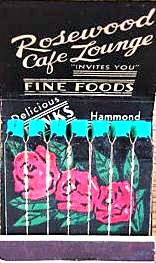
Windy City Tire Shop
3420 North Sheffield
1986 photo - Explore Chicago Collection
since 1971 at various locations
Broadway/Surf
Belmont/Clark
2015 photo - Mandi Siegel Stute "The legendary Alley Chicago store has become an infamous "landmark" destination for generations of counter-culture. We were initially located at 2620 W Fletcher Street, then on Surf & Broadway. The most remembered location was on Clark Street with an alley connection on Belmont Avenue. The Alley Chicago through years of dedication and determination has become the Midwest's premier one-stop-shop for bikers, punks, goths, rockers, and all other alternative lifestyles. The owner, Mark Thomas, often states, "The more things change, the more they remain the same." This holds true for our core customer base and our store philosophy. Faces change, trends change, but who we are and who our core customer is will always remain the same. We believe that fashion is a part of one's identity and self-expression. The Alley Chicago has been in business since the early 1970’s." Read more from the link above.
photos from The Alley Chicago Store Facebook page
The Exterior Artwork
by Jim Mikolas via Forgotten Chocago Discussion Group
Hausman's Laundry
R. Krueger Chicago Public Library via Explore Chicago
and across the street on the northside of Roscoe Street
Lake Shore Furniture
934 W Roscoe
1987 photo - Robert Krueger, Chicago Public Library
via Explore Chicago CollectionsWork of Art Pastry Shop
642 W Diversey Parkway
1990 photo - Robert Krueger via Chicago Public Library

Army Navy Store Surplus
3037 N Clark Street
The Shops in the Hood
by 1990

Commerce Striving
by 1990
via my sister site, LakeView Historical on Facebook
photos - EbayDennis Place
for Games
955 W Belmont Avenue
same building as Quiet Knight, Tuts, and Avalon
photo - Dennis Harris via Forgotten Chicago-Facebook photo below - Andrew M via Yelp
The last vestiges of '80's arcade culture, these two video
game dives in Lake View (957 W Belmont Ave) and Rogers Park (6701 N Clark St)
kept pumping out tokens—80 for ten bucks—until December 2007. This wasn't your
kiddie playland, rather a place you'd expect to find Cobra Kai bullies buying
bumps of blow under the air hockey table. – Chicago Tribune 2014
1) 2007 - This place is the last remnant of the arcade era, of
which I was a devout follower. Thanks to arcades, I now have spent enough to
finance my kids college to any university he could have wanted to attend on
computers, game systems and video games. That's OK, if he really wants to go to
college, he'll get a scholarship. Sadly for me and arcade disciples like myself,
this place has not bought a new game in like 10 years. I can play way cooler
games on the toilet on a Nintendo DS. I don't know how much longer a seedy
place like that can stay in business, especially that being the trendy
neighborhood it is, and the probable demand for space there. You can go to a thrift
store and buy a NES and 5 games for less than it would cost to play games a
quarter at a time for 2 hours. Part of me wants to see this place stay there ,
but for gods sake either go totally old school classic or update , you cannot
be filled with mediocre games from the mid 90's and expect my support.
2) 2008 - wow! I'm surprised Dennis is still open. This was the
hangout during my high school years in the late eighties....The location in
Rogers Park was 100% better....this was
the place to be for serious gaming and compete against the top gamers in the
neighborhood! Pacman rules!
3) 2008 - The last time that I came here was around 6 years ago.
I'm not sure if the crowds changed, but I can assure you that when I came here
a few times each month in high school that some of the seediest people would
hang out daily.
It wasn't very cheap, I'd end up with pocketfuls of
tokens just to feel satisfied in the 'exchange' ratio. I'd be minding my own
business and some antisocial weirdo would come over to an area where NO ONE had
been for half an hour just to beat my game and take it over.
Not much game variety either over the long term.
I'm all for competition, and I am aware that all people
need love and attention... but between the strange men and the transsexual
prostitutes that would interact later in the evening gave me the heebie
jeebies. Take it to your mom's basement :P sheesh. - all comments from Yelp*
1993-2019
812 W Belmont Avenue
Many funky, fun, bizarre, and the unique small businesses of Lake View have left the neighborhood to other areas of the city in the last couple of years. First it was Uncle Fun and then the Alley and now in 2019 the Hollywood Mirror all once along Belmont Avenue. I remember Addendum and Equinox that I was once employed along Broadway that provided the different and unique household items now long gone as of 2015. A new type of customer has moved into Lake View with different tastes and desires. Funky and unique Lake View is out and according to the manager of this store – "bland is in" Hollywood Mirror opened in 1993 and closed in 2019.


Howard Brown Resale Shop Opens on Belmont
2024
once located on Halsted and Waveland the store moved to 3020 N Lincoln Avenue and will open a new outlet store where Hollywood Mirror once was located. the building - 2021 Goggle Map
The Southport Avenue
Shopping Transition
J. Toguri
Mercantile Company
851 W Belmont Avenue
1948-2013
Iva Toguri D'aquino (Tokyo Rose) and her family owned this shop along Belmont west of Clark
both page images - East Lake View by Matthew Nickerson
photos - Patch/Lake View 3109 N Broadway
One of the last homemade chocolate shops A storefront that was part of Broadway for 70 yearsjoin the conversation on LakeView Historical on Facebook
photo - Inside Booster
photo - Roberts S via Yelp
The Market Place
initially known as 'Shop and Save'
located on the south side of Diversey in Lincoln Park

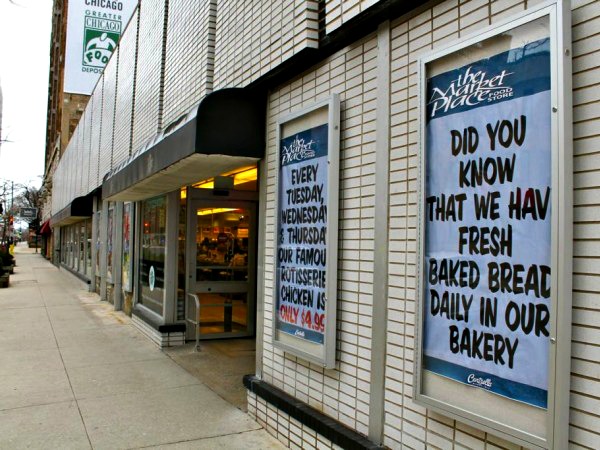

 A Shop and Save article in 1966
The grandson changes name to Market Place in 1986
Known for this exotic fruits 1986
A Shop and Save article in 1966
The grandson changes name to Market Place in 1986
Known for this exotic fruits 1986 The Re-Placement
The first rendering in 2011 with the second rending below in 2017
both images via DNAinfo
The Jewel
on Ashland
2940 N Ashland Avenue
2019 Google view 1950 Sanborn Fire Insurance Map view
1950 Sanborn Fire Insurance Map view This Jewel replaced a host of manufacturing plants such as Illinois Malleable Iron Company - plant #3, Elmer & Mills - plastic Company, a glass factory, a abrasive factory
The Jewel
on Broadway
3541 N Broadway
2019 Google viewSanborn Fire Insurance Maps Evolution1950 the entrance to the 450 car capacity garage (retro-fitted)was at 3545 Broadway and behind the storefronts were fuel & oil tanks
1923 once the home of the Convert of the Sacred Heart
Grape & Lettuce Boycott in 1973
My thanks to contributor Susan Reibman Groff for bringing this Jewel image to my attention. After further research other images were discovered by sequencing the slide ID #'s together. I am assuming all slide images are related. All 3 photos below by Paul Sequeira via National Archives.
the Jewel on Ashland
was also involved in protest in 1975
Chamber of Commerce
map of business's
(missing legend) late 70's or early 80's?
Equinox
3401-05 N Broadway
photos by Garry Albrecht
This one is personal
I was part-time employed here from 1994-2007
This double storefront shop was known for its Holiday Season products especially their very unique ornaments. The originally owners were transplants from Detroit bringing their idea of
'an equinox in every household' to a corner space in Lake View East - Broadway & Roscoe. By the turn of the century the owners expanded the store on the corner to along Broadway creating a hallway opening to the annex store. Over the years 'word of mouth' earned them a reputation as the 'Holiday Season' store during the month of December with, most often, stuffed with ten Christmas trees in both spaces of their shop.
all photos by me
The Christmas trees were stuffed with countless 'themed' ornaments. There would be a tree stuffed with birds, one with fishes, one of red ornaments, one of blue and white ornaments, - you get the idea! There were also racks & racks of unique sometimes premium ornaments through the double store space

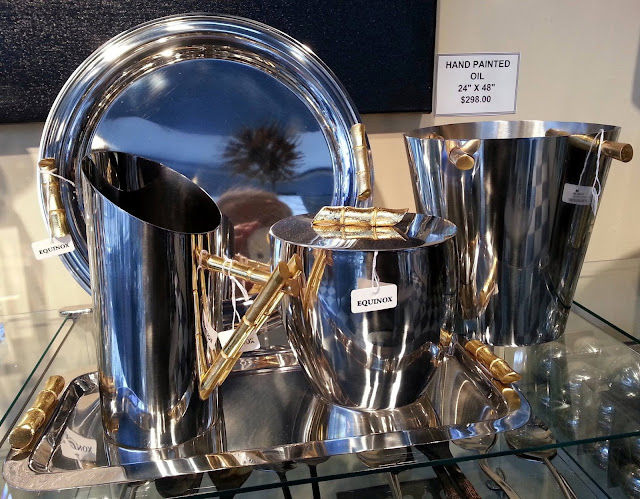



They also sold items for your home bar, clocks for
various sizes and designs, vintage-like lamps or lamps with a possible animal
design on them. In fact, animals was the initial theme of this store - from
cookie jars to dish sets.
I was a part-time employee during the early years finally
working only during the month of December as a gift box maker in their
basement. The customer would request that their unique gift that would be enclosed in a 'EQUINOX' designed box - over 25 sizes & shapes. While the store had a great 24 year run it could have had exploded in sales for another 24 years if the created an internet sales component to their business strategy. I created their Facebook presence in 2012 after years of persuading and pleading but the owner failed to create an internet presence at very end. I will have fond memories of this store, its customers, and my former fellow employees - if the walls could only talk!
the location was once was a pharmacy (labeled drugs)
per this 1950 map
Bel-Port
Liquor Store
1362 W Belmont Avenue
1982-2016
across the street to Schubas
An interest story about a another long-term business
that is no longer 
YouTube 2015 video
photo - Iris S. via Yelp
For 12 years, Amy Stasny and her dog Bailey have started
their walks around west Lake View at Bel-Port Liquors, where owner Joe Barbari
always has dog treats waiting for one of his favorite customers.
With his pet cockatoo Sasha perched on his shoulder on a
recent weekday, Barbari tossed bone-shaped biscuits to Bailey. For a while,
when the dog was sick, Barbari's biscuits were all she'd eat, Stasny said. For
decades, this has been Barbari's life. His cousin opened Bel-Port Liquors in
March 1982, and Barbari, 50, took over six years later. "I've been here
ever since," said Barbari. But the storekeep's watch over Belmont and
Southport avenues will come to an end this spring, when Bel-Port Liquors, 1362
W. Belmont Ave., is expected to close to make way for a new Bow Truss Coffee
Roasters. "I'm losing everything," Barbari said solemnly. "This
is my only source of business. This is what puts food on my table." The
building has been sold, and he's been told to vacate by mid-May. But before
Barbari can dwell, another longtime customer stops in to shake his hand and
wish him a "happy retirement."
photo - DNAinfo
Barbari's eyes light up, and he cracks a joke about
"putting my feet up." Stickers the store had made with his likeness that label
products as "Joe Approved" have suddenly become a hot item, as have
similar T-shirts. They talk briefly about Barbari's daughter, who's in college,
and his visitor departs, promising to see Barbari again soon. "I'm going
to miss a lot of people around here," Barbari says, brusquely helping
three or four customers. But he laments that he's not as close to as many
customers as he used to be. "The atmosphere, the sense of humor with
people doesn't exist as much. You say, 'Good morning' to them, and they look at
you like, 'Who are you?'" he said.
photo - DNAinfo
It can be hard to resist Barbari's easy manner, and even
harder to resist Sasha. For the last four years, Sasha has greeted Bel-Port
customers, often perched on Barbari's shoulder as he works. "The kids come
and say hello; the adults take pictures with her; and everybody comes to see
her every day," Barbari told DNAinfo Chicago last year. "She's
getting very popular — right, Sasha?" Rent prices in Lakeview have risen
beyond his reach, so Barbari doesn't plan on opening a new location. But what
stunned him, Barbari said, was his landlord's abrupt break from what he'd seen
as a warm relationship built over three decades. "All of a sudden, he
turned 360 degrees on me," Barbari said. "I've never seen him like this
before. He could just say good luck, at least." Barbari's landlord could
not be reached for comment.
photo - DNAinfo
The Palestinian national doesn't know the exact date
he'll have to close, but said he hopes to see most of his customers before
then. After 35 years in the United States, it'll be like saying goodbye to
family. "I love the people around here," Barbari said.
"The neighborhood has changed, yes, but the people I deal with have been
wonderful." - DNAinfo
Sasha the friendly parrot
above photo - Reid C. via Foursquare
below photo - Terrie G. via Foursquare
the new look for the building but not the business
2018 photo below - Chris Cullen
Pastoral
2947 N Broadway
2004-2019
photos - their social media
the owners belowtheir retail space
their next door restaurant & barShopping in Ravenswood
Mapping ItAn Artist ViewVintage Business
Advertisements:
I love to browse old publicizations
of vintage advertisements from old Lake View
The Lake View Township
Directory
1885-86 Edition
images - Ebay
The directory was subdivided into commercial and residential sections - pre 1909 addressed
* the first and apparently the only directory published *
book cover
book thickness
The commercial section below 
The residential section below
1890-1915
post 1909 address
2834 Evanston Avenue (Broadway)
Newspaper
1959 & 1963
images - Susan Reibman Groff
now part of my collection
(click to enlarge)
a page from 1959
pages from 1963
Norwegian Lake View
Lutheran Church
Ad Booklet
part of my collection
This is a event program booklet from the Lake View Lutheran Church when it was located on the corner of Roscoe and Kenmore (Osgood). This booklet highlights the local businesses that supported their event in 1915. This booklet dates after the 1909 address changes. It should be easy to research the businesses on each page.
photos - Ebay but now part of my personal collection
Local Business
Matchbooks
all part of my private collection
reverse side
Rutter Coal Company
and
Lake View Recreation
reverse side

Reed's Candy Company
and
Isbell's Magic Bar & Restaurant
reverse side

Midget Barand
Carl's Swanson's Tavern

reverse side

Vanity Fair
(formerly Bismarck Gardens)
and
Louie's Service
reverse side

Irving-Southport Garage
and
Merry Gardens Ballroom
reverse side

Lake View Tavern and
J.B.'s Bleachers Tavern
(now Murphy's Bleachers)

reverse side
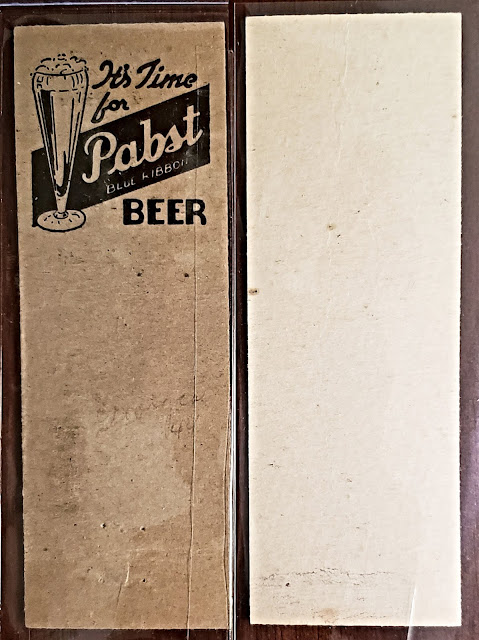
Old Hickory Inn and
Bryson's Lunch

reverse side

Biastett's Cocktail Lounge
and
Aquarium Cafe
reverse side

Marigold Arcade
reverse side
inside cut-out
another look at it
Frank Helsing's [Restaurant]

Marigold Car Service
and
Victorian House Restaurant
turned ...
reverse side

Cornelia Lounge & Restaurant and
Clubland at the Vic Theater

reverse side

Bert Weinman Ford

Tut's Chicago
a music venue


Marigold Gardens
former Bismarck Gardens
promoting a German-American Chorus
Buckingham Theatre

Vanity Fair/Grill
once known as Bismarck Gardens
and Marigold Gardens
Surf Laundry

Melrose Beauty Shop

Cubs Grill
currently The Cubbie Bear

The Rienza Hotel an apartment hotel
the Video Bar
Ann Sather
their second location
Belmont Club
Leona's Restaurant
and their first location .... but a business card

Georges' Aquarium
Melrose Restaurant/Grill & Bakery
two locations
Character Club
and
Screw Ball Club
reverse side
A. Nielsen Gift Quartersand
Cranes Pharmarcy
reverse side
Alfo Photo Studio and
"L" Corner Tavern
reverse side
Old English Pub
and
Isbell's Restaurant
Marr's Drug
Lincoln Lumber Company
The Elk's Restaurant
reverse side
inside flap
Rudey's Tavern
Idle Hour Restaurant & Tap Room
Belmont Lounge
reverse side
Wieboldt's
Hollywood Barbq
and
Victoria Restaurant & Ice Cream Shoppe
Famous Door
and
The Lincoln Knitting Millsreverse sideLittle Ted's
Famous Door
reverse

Norshore Medical Service
New Capri
Belmont Hotel
Tango (Restaurant)
at the Hotel Belmont
an oversized appointment
reverseinside flapWeiblinger's Tavern

reverseBarry Tavern
reverseGreen Parrot Cocktail Loungereverseinside flapMath Igler's
Casino
reverseinside flapIvanhoe Restaurant
reverse sideGallaghers Tavern
reverseThe Two Step Inn
and
C and G Luncheonette
reverseinside flapThe Circus and
3810 Clubreverseinside flapBauers' Wine & Liquors and
Show Club/Barry TavernreverseBlock and Clark
Bowling/Billards
3239 N Clark Street
Belmont Bank
Texaco Station
The Park-Lane
reverseinside flapBelair (SRO) Hotel
La Scala
Restaurant
reverse sideinside flapDiversey Arms Hotel
A Salesman's Sample
This matchbook was cut from a sheet of matchbooks
to used for a potential client purchase
Post Notes:
Get Your Local News ...
Southport Corridor News & Events
a neighborhood online business & events news source
they cover this strip of stores very well!
2019 shop map of the area of Southport & Clark
In the 2015 or so this area has changed more than any other shopping area in Lake View Lake View Roscoe
Chamber of Commerce Master Plan
The Lakeview Roscoe Village Chamber of Commerce, in partnership with Friends of Lakeview and Special Service Area (SSA) 27 is embarking on a Neighborhood Master Plan to bring cohesion and unity to the Community of Lake View and the neighborhood of Roscoe Village
also visit ...
Chamber of Commerce
and
Chamber of Commerce
and
Now, follow me to my next post called
Important Note:
These posts are exclusively used for educational purposes. I do not wish to gain monetary profit from this blog nor should anyone else without permission for the original source - thanks!
 “No one likes them anymore,” says Haderlein. “They’re
multistory; to get to the different departments you have to take an elevator or
escalator. People don’t like that. They don’t like to walk upstairs; they don’t
like to take elevators. They just want to be able to walk right in. These
stores are out of the past.”- Chicago Reader 1991
“No one likes them anymore,” says Haderlein. “They’re
multistory; to get to the different departments you have to take an elevator or
escalator. People don’t like that. They don’t like to walk upstairs; they don’t
like to take elevators. They just want to be able to walk right in. These
stores are out of the past.”- Chicago Reader 1991







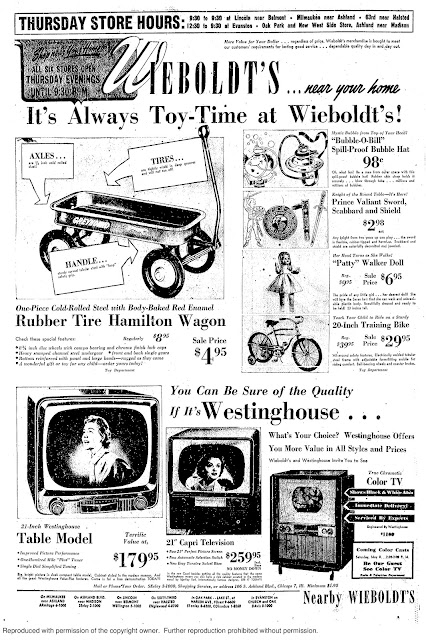




















































































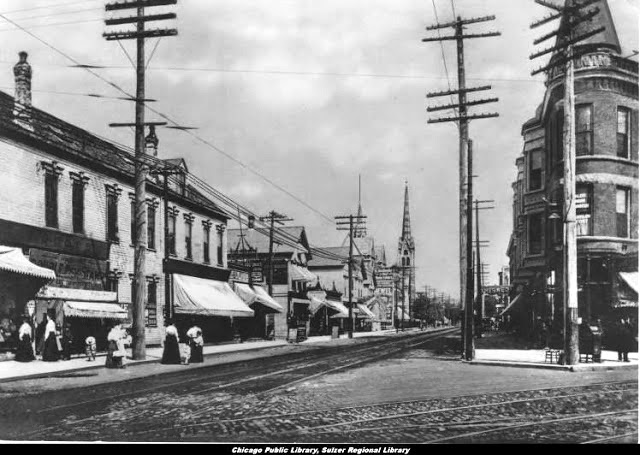
,+looking+northeast+from+Belmont+Avenue+(3200+N).+This+busy+6-way+intersection+continues+to+thrive+today..jpg)



















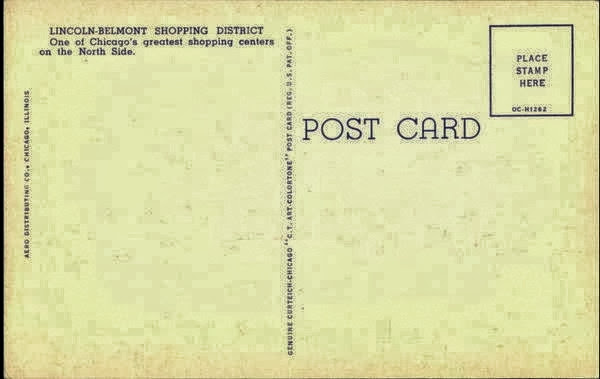
































.jpg)






























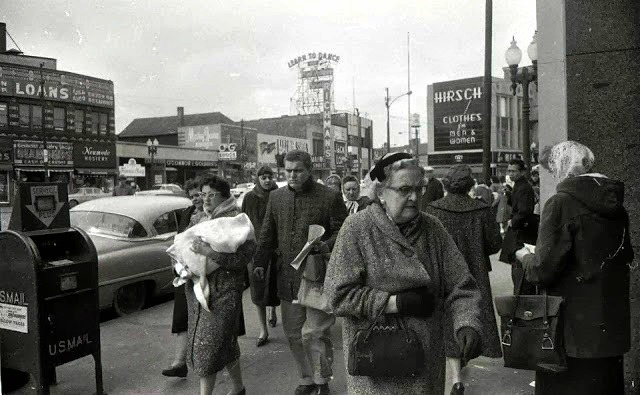

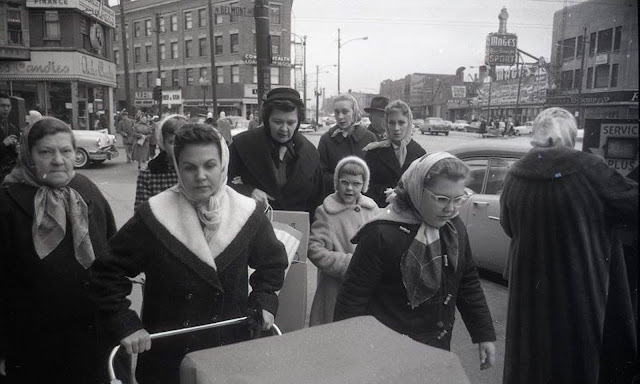






























































































































.jpg)




































































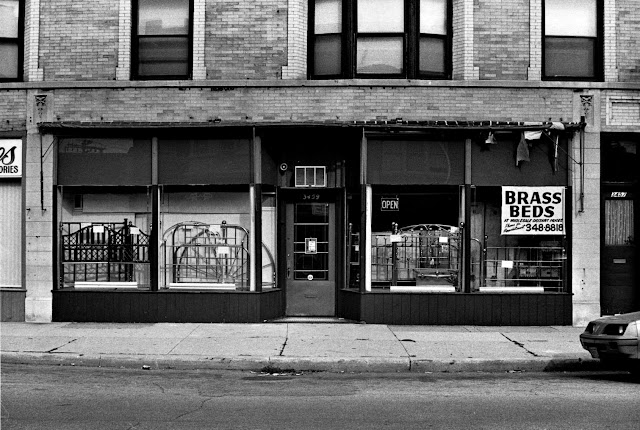
















































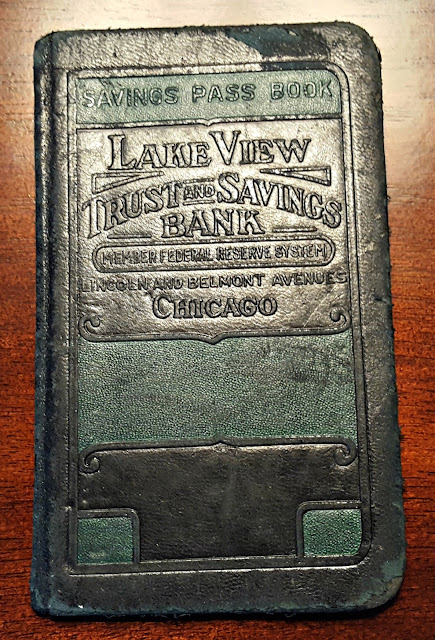
















































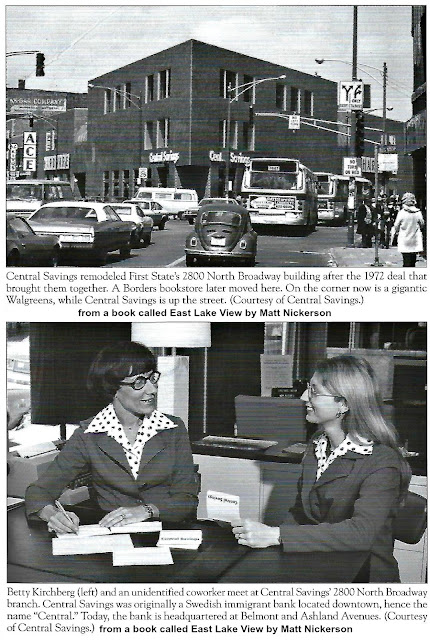












































































































.jpg)















.jpg)
.jpg)
.jpg)
.jpg)

.jpg)





























.jpg)
.jpg)
%20(1).jpg)

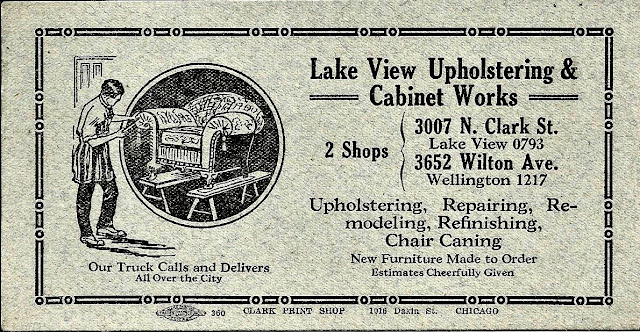



.jpg)











































































.jpg)











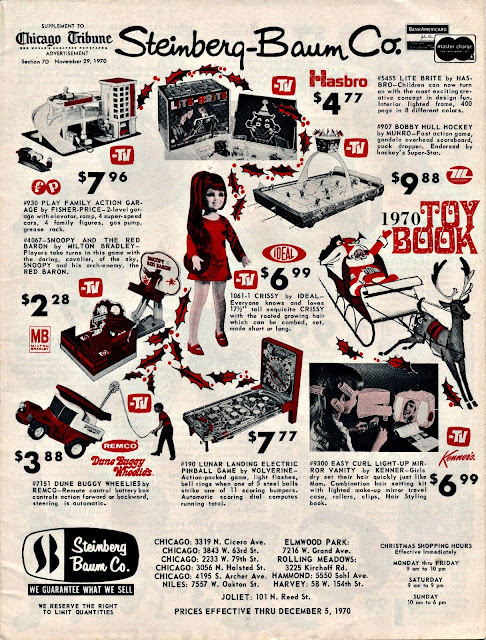



















































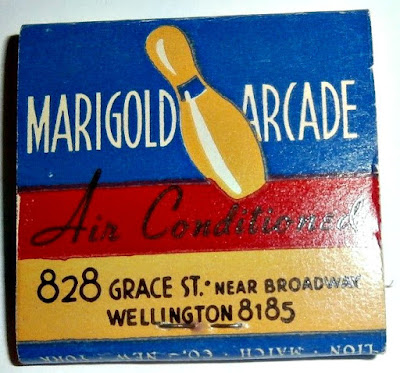



































































































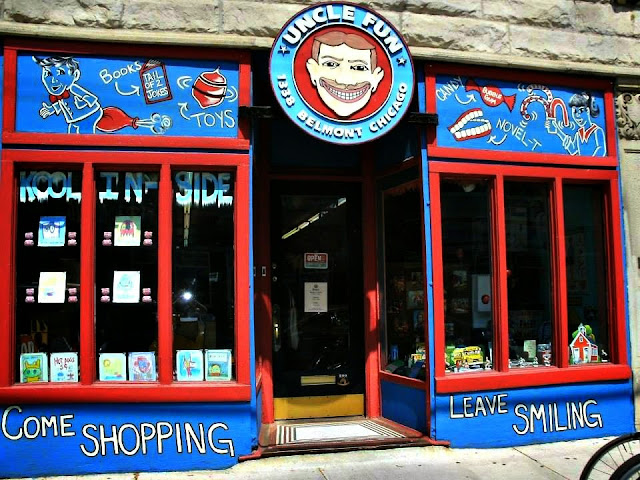




.jpg)

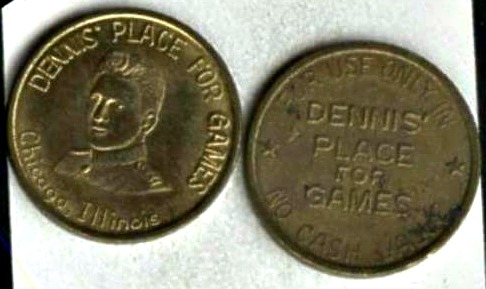









































































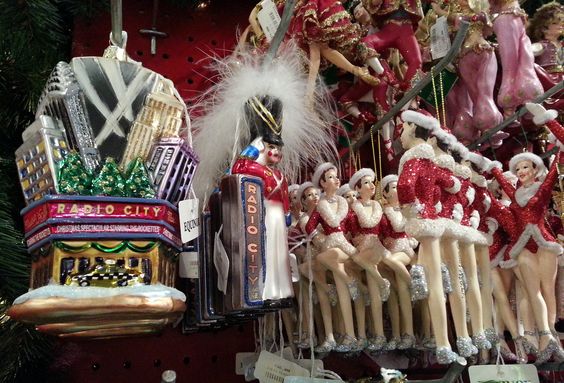




















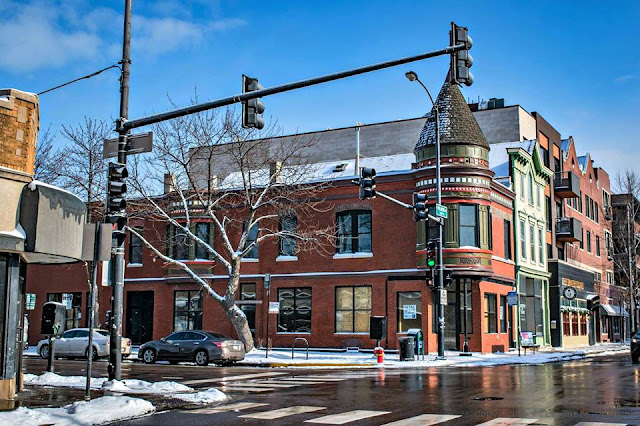



















































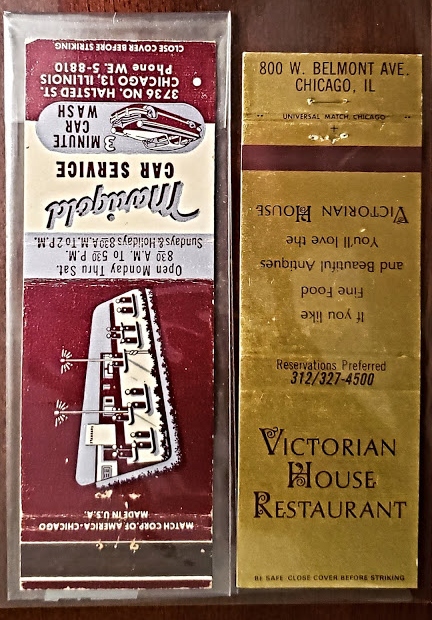


























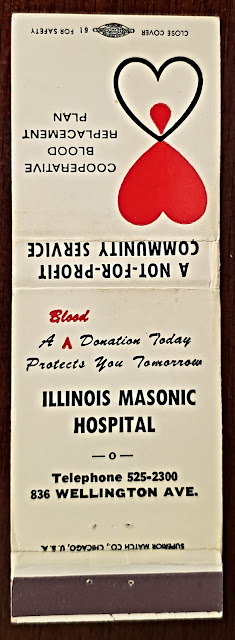


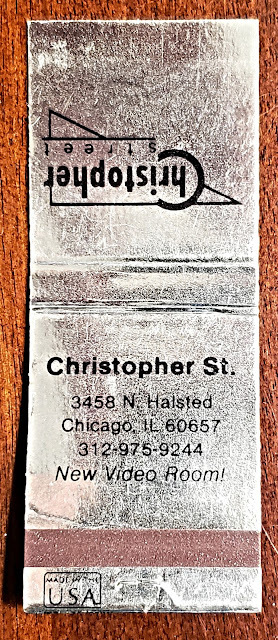
































.jpg)
















.jpg)



.jpg)







.jpg)

.jpg)
.jpg)



.jpg)




.jpg)
.jpg)


.jpg)



.jpg)

.jpg)




.jpg)


.jpg)

.jpg)


.jpg)








No comments:
Post a Comment